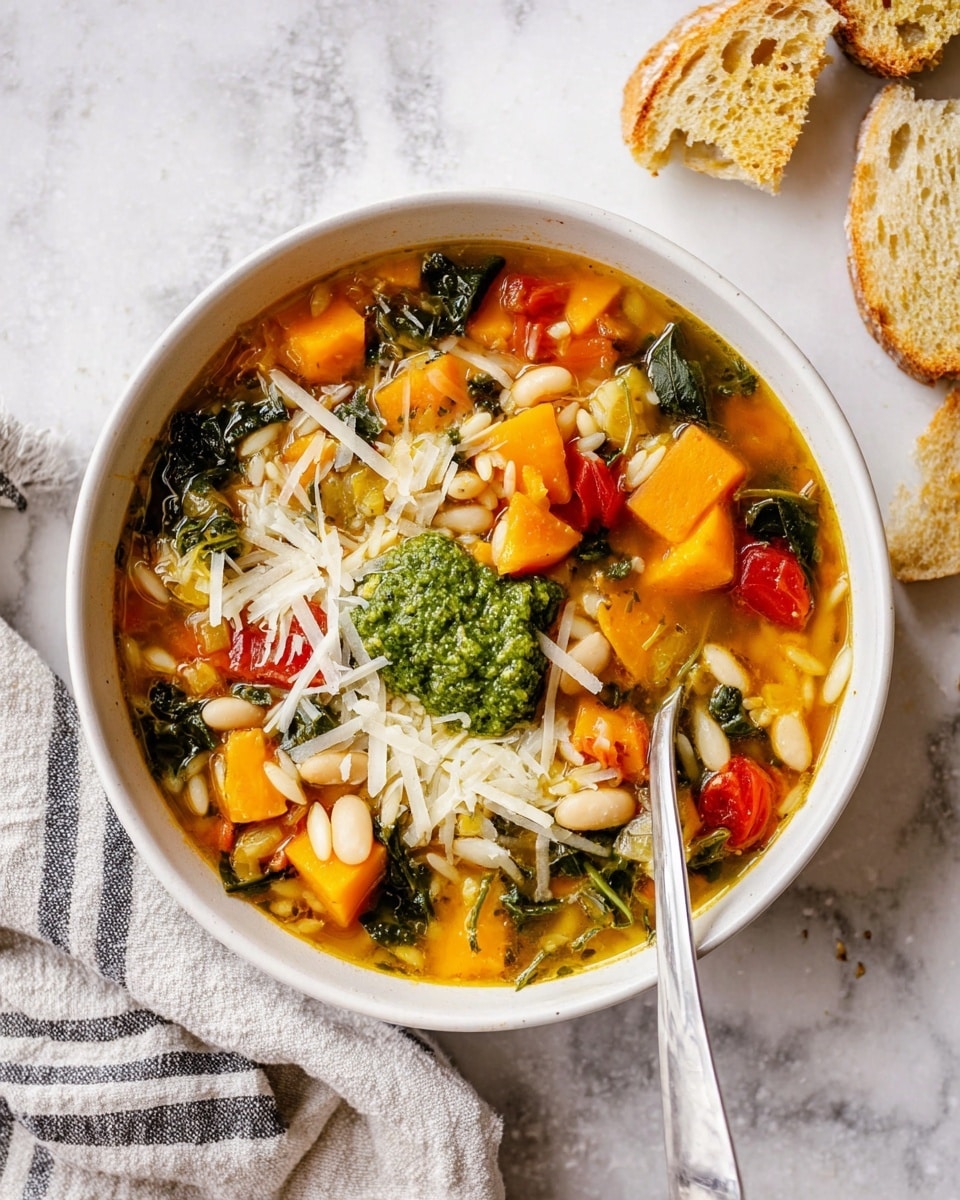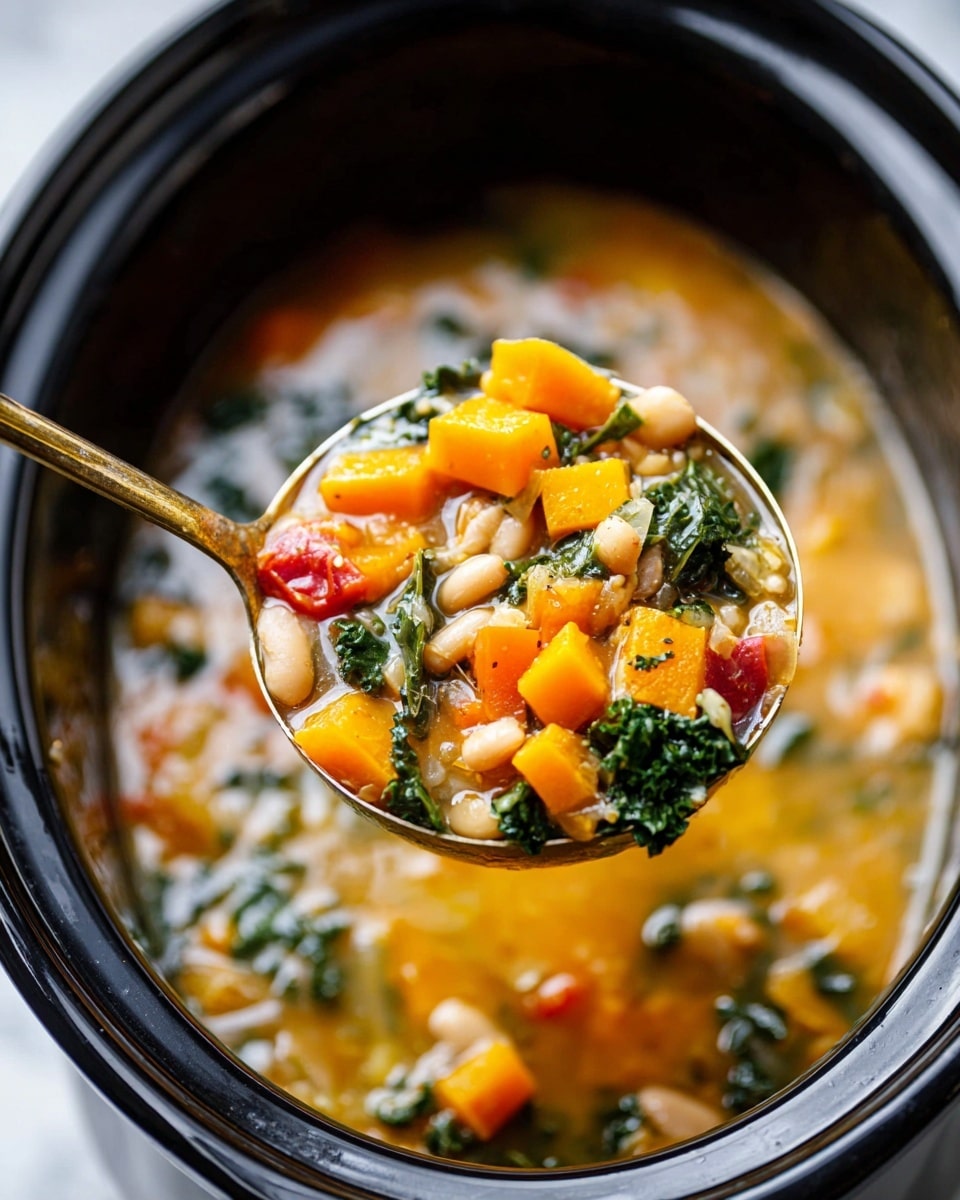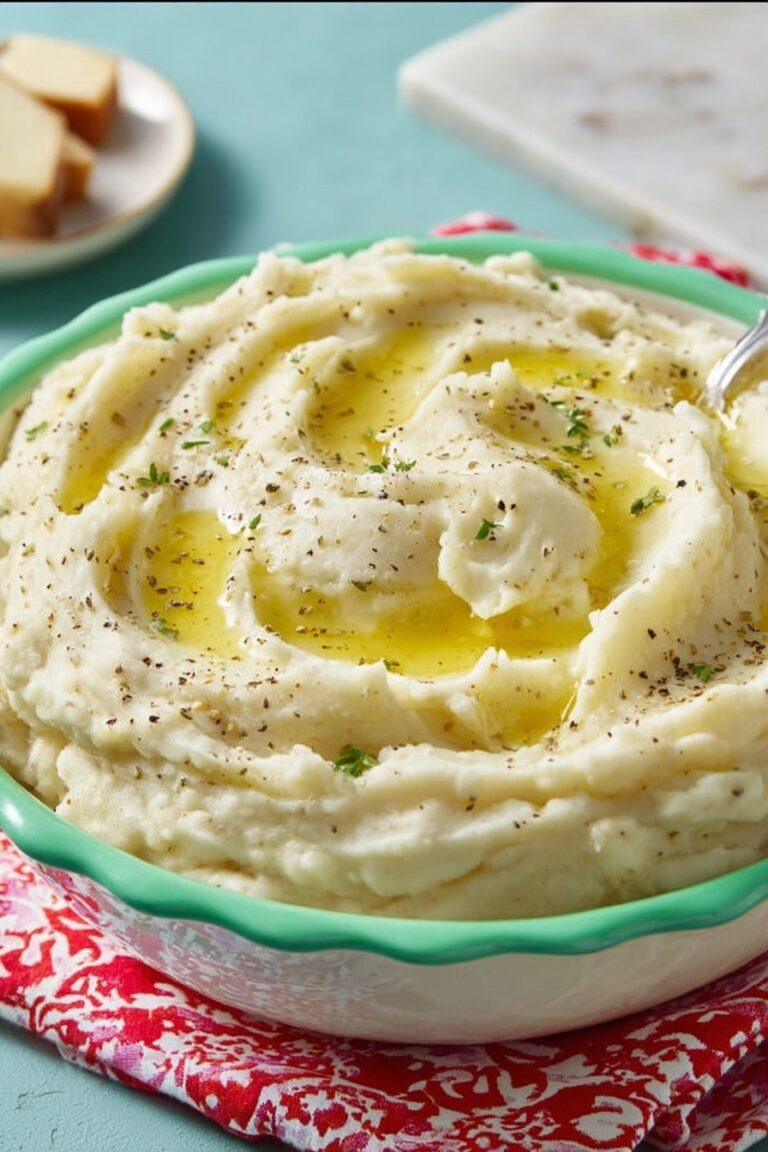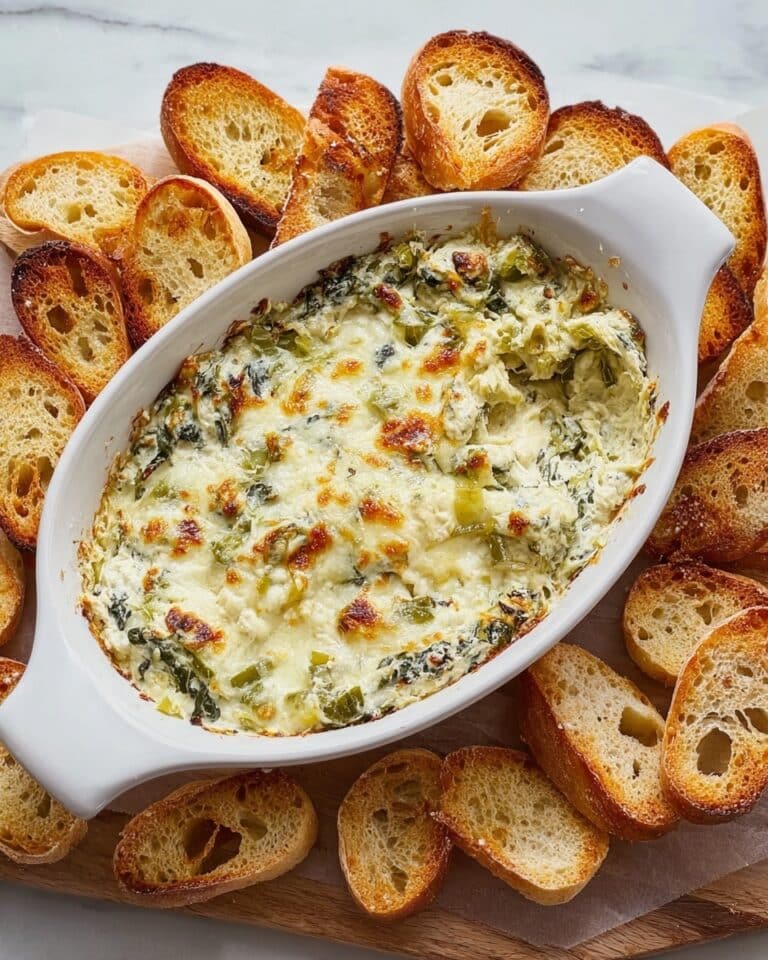If you’re craving something warm, cozy, and packed with hearty goodness, then this Winter Minestrone Recipe is about to become your new favorite. I absolutely love how this soup combines sweet butternut squash, tender beans, and vibrant kale—all simmered together to create a bowl that feels like a big, comforting hug on cold days. Stick around because I’m going to walk you through every step to make sure your own winter minestrone turns out perfectly.
Why You’ll Love This Recipe
- Hearty & Nourishing: This soup fills you up without feeling heavy, perfect for chilly evenings.
- Packed with Flavor: The combination of garlic, Italian seasoning, and red wine vinegar adds depth you’ll crave again and again.
- Vegetarian & Adaptable: Ideal for meatless meals and easy to tweak with your favorite winter veggies or pasta.
- Super Simple to Make: With pantry staples and just a handful of fresh ingredients, you can have dinner ready in no time.
Ingredients You’ll Need
Each ingredient in this Winter Minestrone Recipe plays its part in building layers of flavor and texture. When I shop for this soup, I always pick a nice firm butternut squash and vibrant greens to keep the soup fresh and hearty. Using canned beans and tomatoes means it’s a convenient recipe, but fresh works too if you’re up for it.
- Butternut squash: Adds sweetness and creamy texture; make sure it’s firm, not mushy.
- Yellow onion: The base flavor that brings sweetness and depth when sautéed.
- Garlic: Freshly minced gives that irresistible aroma and a punch of flavor.
- Chickpeas: Great source of protein and texture; canned saves time.
- Great Northern or white beans: Soft, mild beans that soak up flavors beautifully.
- Diced tomatoes: Provides tang and a bit of brightness to balance the sweetness.
- Vegetable stock: The heart of the soup’s flavor; use a good-quality one for best results.
- Water: To adjust the soup consistency without diluting flavor.
- Kosher salt: Enhances all the other flavors—season gradually as you cook.
- Italian seasoning: A lovely blend of herbs that makes this soup unmistakably cozy and comforting.
- Lacinato kale or baby spinach: Adds earthiness and a pop of color pretty much at the end.
- Red wine vinegar: That little splash brightens the whole dish and lifts the flavors.
- Cooked small pasta: Orzo or ditalini works perfectly here; it makes the soup feel truly like a meal.
- Pesto: A spoonful stirred in at serving adds fresh, herby richness.
- Freshly grated parmesan cheese: The final touch that melts in and makes everything taste even better.
Variations
I love making this Winter Minestrone Recipe my own each time I cook it. You’ll find that swapping out some ingredients or adding extras can keep it fresh and exciting—don’t be afraid to experiment!
- Make it vegan: Skip the parmesan and pesto (or use vegan versions) for a fully plant-based delight.
- Add seasonal veggies: Toss in carrots, parsnips, or even some root vegetables if you have them on hand—my family goes wild for these subtle additions.
- Protein boost: Stir in cooked sausage or shredded chicken if you’re not vegetarian—I’ve done this for a heartier version, and it was a crowd-pleaser.
- Gluten-free version: Use gluten-free pasta to keep it safe and just as tasty.
How to Make Winter Minestrone Recipe
Step 1: Sauté the Aromatics
Start by heating a bit of olive oil in a large pot over medium heat. Toss in the finely chopped yellow onion and minced garlic—smelling that sweet onion and garlicky aroma filling your kitchen is one of my favorite signals that good things are coming. Cook until the onion turns translucent, about 5 minutes, stirring occasionally so nothing sticks or browns too much.
Step 2: Simmer the Butternut Squash and Beans
Add the cubed butternut squash, canned chickpeas, Great Northern beans, diced tomatoes (with their juices), vegetable stock, and water to the pot. Stir in the kosher salt and Italian seasoning. Bring everything to a boil, then lower the heat to a gentle simmer. Now’s the time to let it cook slowly—about an hour or until the squash is tender and the flavors meld together. If you have a slow cooker, this is perfect to set and forget for 6 hours on low (which is fantastic on busy days).
Step 3: Add Greens and Pasta
When the squash is tender, stir in the chopped kale or spinach and cooked small pasta. Let the soup simmer another 5 minutes so the greens wilt nicely and the pasta warms through. If your soup feels too thick, add a splash more water or broth to get your desired consistency.
Step 4: Finish with a Bright Splash and Serve
Just before serving, stir in the tablespoon of red wine vinegar to lift all those robust winter flavors. Ladle the minestrone into bowls and top each with a dollop of pesto and a generous sprinkle of freshly grated parmesan—trust me, it’s the kind of finishing touch that makes this soup unforgettable.
Pro Tips for Making Winter Minestrone Recipe
- Cook the Pasta Separately: To avoid mushy pasta, I always cook it ahead and add it at the end—your soup stays perfectly textured longer.
- Use Fresh Herbs if Possible: If you have fresh rosemary or thyme around, toss a sprig in while simmering for extra aroma. Just remove it before serving.
- Control Salt Gradually: Add salt in stages and taste as you go, especially since canned beans and stock can be salty already.
- Don’t Skip the Vinegar: That splash of red wine vinegar right before serving really brightens the whole bowl—it’s my secret weapon!
How to Serve Winter Minestrone Recipe
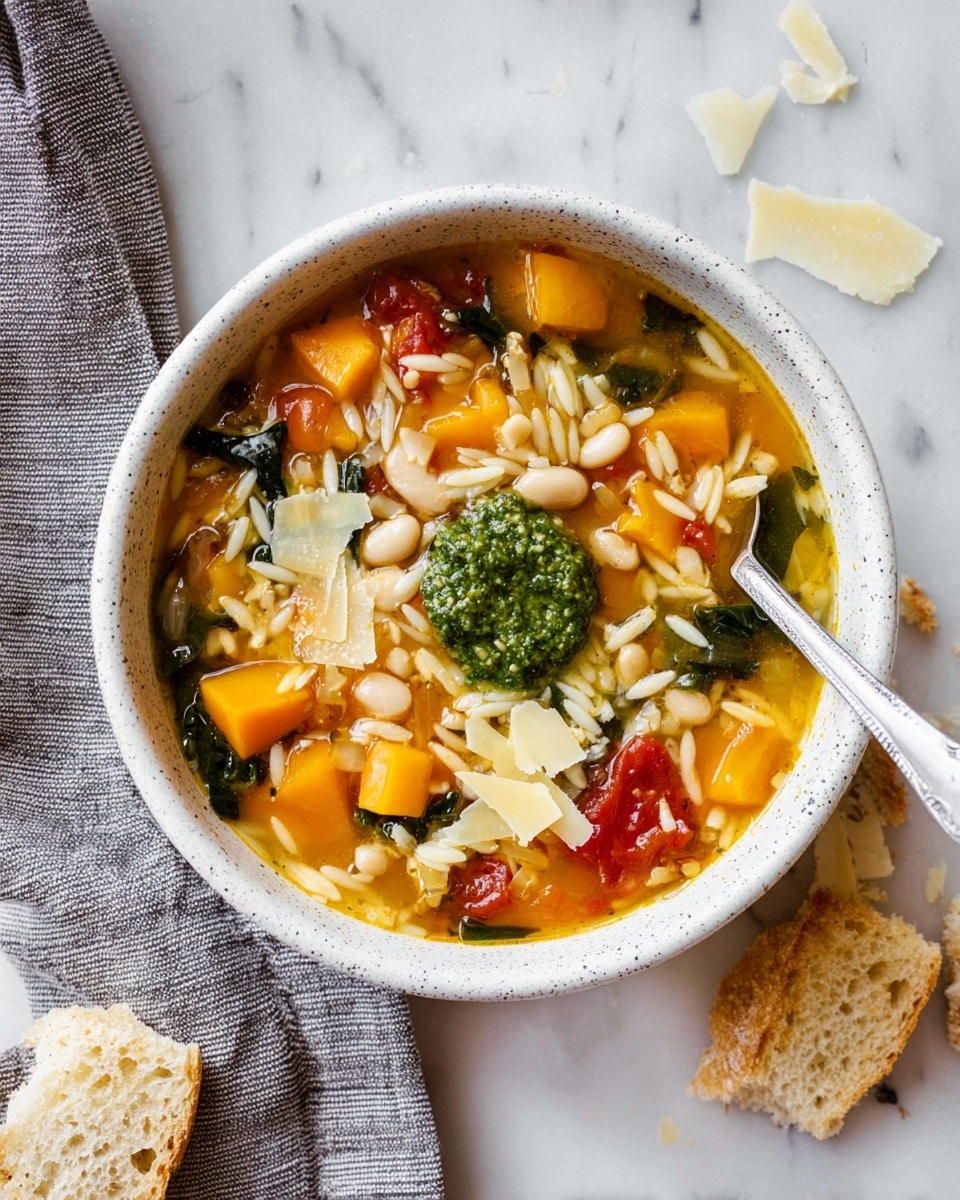
Garnishes
I always top my serving bowls with a spoonful of pesto and a good sprinkle of freshly grated parmesan cheese. It adds richness and a fresh herby note that lifts the entire soup. Sometimes, a drizzle of extra virgin olive oil or a few red pepper flakes get thrown on for an extra punch. You’ll enjoy how simple garnishes make this soup feel gourmet.
Side Dishes
Pair this Winter Minestrone Recipe with crusty bread or garlic breadsticks to soak up every flavorful drop. When I want something lighter, a crisp green salad with lemon vinaigrette makes a refreshing contrast. And if you’re feeling indulgent, a slice of cheesy focaccia is always a hit around the table.
Creative Ways to Present
For cozy dinner parties, I like serving the soup in rustic mugs or mini cast-iron pots to keep it warm and add charm. You can also ladle it over toasted crostini with melted cheese for a fun twist. If you want to impress, garnish with microgreens or a fresh basil leaf instead of just pesto—little details like this make a big difference.
Make Ahead and Storage
Storing Leftovers
I usually store any leftover winter minestrone in airtight containers in the fridge for up to 4 days. Because the flavors deepen over time, I often find leftovers taste even better the next day. Just keep the pasta separate if possible, to avoid it getting too soft.
Freezing
This soup freezes beautifully! I let it cool completely, then portion it into freezer-safe containers (without pasta) and freeze for up to 3 months. When you’re ready to eat, thaw it overnight in the fridge for easiest reheating.
Reheating
Reheat gently on the stovetop over medium-low heat, adding water or stock to loosen the consistency if needed. If you stored pasta separately, stir it in toward the end to prevent it from getting mushy. I like to freshen it up with an extra splash of vinegar or a little more parmesan before serving.
FAQs
-
Can I make this Winter Minestrone Recipe in a slow cooker?
Absolutely! I often use a slow cooker on busy days. Just add all ingredients except pasta, and cook on low for 6-8 hours or high for 3-4 hours. Add the pasta and greens in the last 15 minutes to prevent overcooking.
-
What pasta works best in this soup?
I’m a fan of small-shaped pasta like orzo, ditalini, or elbow macaroni because they mix easily and add nice texture. Gluten-free pasta options also work well if you need that substitution.
-
Can I use fresh beans instead of canned?
You can! Just remember to soak and cook them fully before adding to the soup. Using canned beans is a big time saver, but fresh-cooked beans will give homemade satisfaction too.
-
How can I make this soup gluten-free?
Simply swap out the pasta for your favorite gluten-free varieties and ensure your vegetable stock and other ingredients contain no gluten. The soup will taste just as delicious!
Final Thoughts
This Winter Minestrone Recipe is one of those dishes that feels like family—it’s warm, comforting, and always satisfying. I love how easy it is to make, and how versatile it is for whatever you have in your pantry. Whether you’re in the mood for a nourishing dinner after a day out in the cold or just want a bowl full of veggie goodness, this soup will have you coming back for more. So go ahead, try it out—it’s like a little winter hug in a bowl.
Print
Winter Minestrone Recipe
- Prep Time: 10 minutes
- Cook Time: 6 hours
- Total Time: 6 hours 10 minutes
- Yield: 8 servings
- Category: Soup
- Method: Slow Cooking
- Cuisine: Italian
- Diet: Vegetarian
Description
Winter Minestrone is a hearty and nourishing vegetarian soup perfect for cozy winter nights. This recipe features a comforting blend of butternut squash, beans, kale, and pasta, simmered slowly to develop rich flavors. It’s easy to make at home and ideal for a wholesome dinner, balancing textures and tastes beautifully with a touch of red wine vinegar and optional pesto and parmesan cheese.
Ingredients
Vegetables and Aromatics
- 4 cups cubed butternut squash
- 1 medium yellow onion, finely chopped
- 2 cloves garlic, minced
- 1 cup chopped Lacinato kale or baby spinach
Beans and Tomatoes
- 1 (15-oz) can chickpeas
- 1 (15-oz) can Great Northern beans or any white bean such as cannellini
- 1 (15-oz) can diced tomatoes
Liquids and Seasonings
- 1 quart vegetable stock
- 2 cups water
- 3 teaspoons kosher salt
- 1 teaspoon no-salt added Italian seasoning
- 1 tablespoon red wine vinegar
Pasta and Garnishes
- 1 cup cooked small shape pasta such as orzo, ditalini, tubetiini, or elbow macaroni (use gluten free pasta for gluten free option)
- Pesto (optional, for serving)
- Freshly grated parmesan cheese (optional, for serving)
Instructions
- Prepare the vegetables: Start by peeling and cubing the butternut squash into small, even pieces. Finely chop the yellow onion and mince the garlic cloves to ensure they blend well into the soup.
- Sauté aromatics: In a large pot over medium heat, lightly sauté the onion and garlic until translucent and fragrant, about 3-4 minutes, to develop their natural sweetness and build flavor as the base for the soup.
- Add liquids and seasoning: Pour in the vegetable stock and water to the pot. Stir in the kosher salt and no-salt added Italian seasoning, then bring the mixture to a simmer to prepare for the vegetables and beans.
- Incorporate squash and beans: Add the cubed butternut squash, chickpeas, Great Northern beans, and diced tomatoes into the pot. Stir to combine evenly and allow the soup to return to a simmer.
- Simmer the soup: Reduce the heat to low and let the soup cook uncovered for approximately 6 hours (360 minutes), allowing the flavors to marry and the butternut squash to become tender and meld with the other ingredients.
- Add greens and pasta: About 10 minutes before serving, stir in the chopped Lacinato kale or baby spinach and cooked small pasta shapes. This will wilt the greens gently and heat the pasta through without overcooking them.
- Finish with vinegar and serve: Remove the soup from heat and stir in the tablespoon of red wine vinegar to brighten the flavors. Ladle the soup into bowls and serve with a dollop of pesto and a sprinkle of freshly grated parmesan cheese if desired.
Notes
- This minestrone soup is perfect for winter due to its warming ingredients and slow-simmered flavors.
- Use gluten free pasta to make this recipe gluten free.
- For a vegan option, omit parmesan cheese or substitute with a plant-based alternative.
- Feel free to add additional vegetables such as carrots or celery according to preference.
- The long simmer time enhances the depth of flavor but can be shortened by cooking on medium heat for about 1 hour until squash is tender.
Nutrition
- Serving Size: 1 bowl (about 1/8 of recipe)
- Calories: 285 kcal
- Sugar: 3 g
- Sodium: 481 mg
- Fat: 0.4 g
- Saturated Fat: 0.1 g
- Unsaturated Fat: 0.14 g
- Trans Fat: 0 g
- Carbohydrates: 19 g
- Fiber: 3 g
- Protein: 3 g
- Cholesterol: 0 mg

